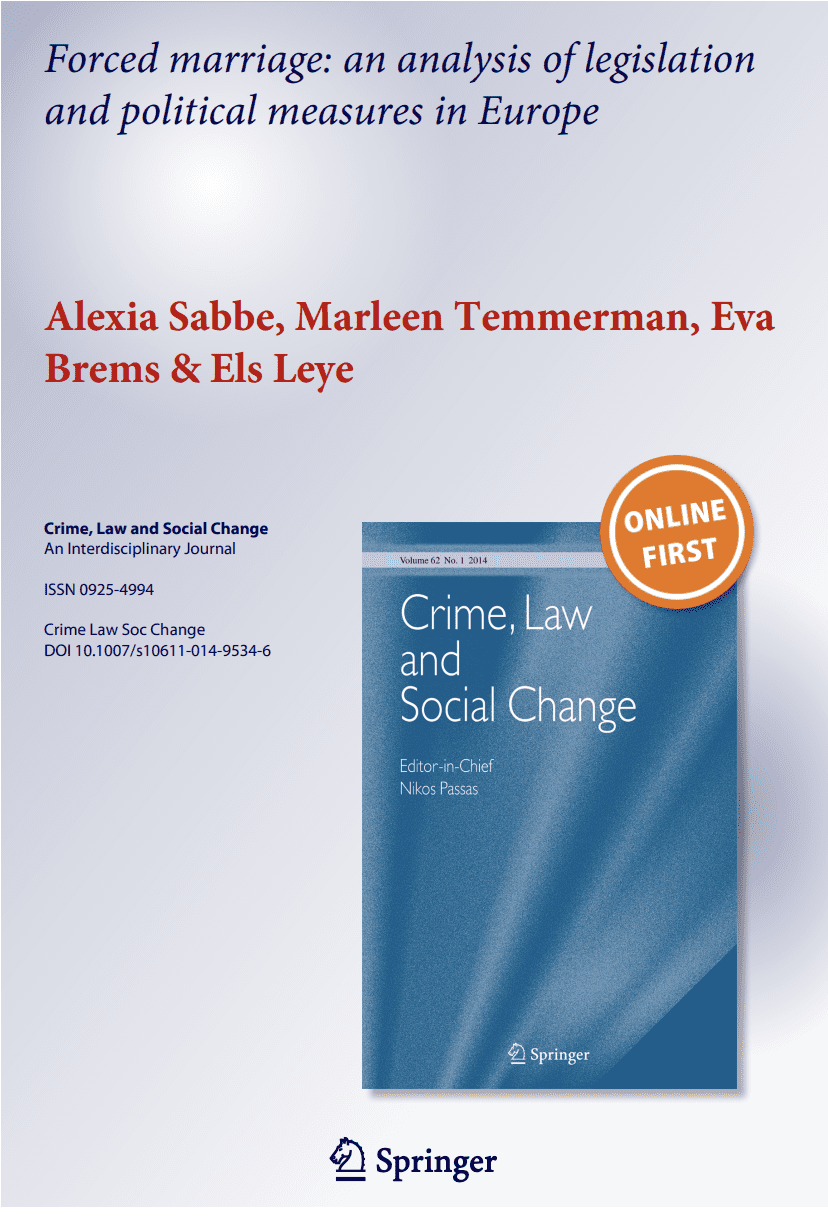
Forced marriage: an analysis of legislation & political measures in Europe
In recent years, forced marriage has become the subject of public and political debate throughout Europe, particularly due to reports of immigrant girls in Western European countries taken to their country of origin to be forcibly married [1]. The discussion suffers lack of clarity as countries have different, overlapping ways of perceiving the problem [2]. Forced marriage is interwoven with migration and integration on the one hand, and domestic violence on the other hand [3]. On the whole, in seemingly every country there is a tendency to connect the issue to the culture, and sometimes also the religion, of minority population groups [2, 4–7]. This is partly rooted in the media’s portrayal of forced marriage in light of the concept of family honour and the occurrence of honour killings [8, 9]. Reddy clarifies that the term ‘honour killing’ usually envisages a scenario where a woman is killed to either prevent or repair perceived violations of male or familial ‘honour’ [9]. Forced marriage is thus considered both a type of ‘honour crime’ in itself, and the precursor to or result of other types of honourrelated violence [9]. In referring to customs and behaviours of migrants, a contrast is made with the majority population [4]. As a result, the imported foreign cultural practices are seen as a threat to fundamental European or Western values [4, 7, 8, 10, 11]. This perception and emphasis on the phenomenon as a migrant issue is inherently influencing and shaping national public debates, legislation and policies. The aim of this paper is to critically assess prevailing and emerging policies regarding forced marriage in Europe.
The research available in this context, in addition to government reports, NGOreports, policy documents, legislation and literature, is examined as it relates to forced marriage, its impact on victims and the current policy trends in Europe. Documents from institutional sources, such as the World Health Organisation, Council of Europe, the Europe Union and the United Nations, are included in the analysis. The highly contemporaneous nature of the topic, with laws and policies changing rapidly, has influenced the decision to only include data from the year 2000 onwards, up until December 2012. The decision to base this analysis on fairly recent and contemporary sources is also echoed by authors, for instance stating that the last five years (…) is the period in which there has been a substantial impetus in relation to forced marriage [12].
The Multiple Streams framework is applied as a tool for the analysis in order to explain the policy process regarding forced marriage in Europe. This theoretical framework offers insights into and facilitates understanding of the policy making process [13]. Once a greater understanding of the policy situation is achieved, consideration can be given to how the current policy measures are countering the issue of forced marriage. The framework is especially useful for ambiguous problems where there are many ways of thinking about or approaching the phenomenon, and for which solutions are not clear. It must be noted that ‘ambiguity’ differs from ‘uncertainty’. The distinction is that more evidence may reduce uncertainty, but it does not reduce ambiguity [14]. Such is effectively the case with forced marriage. As more stakeholders join the discussion, the diverging opinions between presented solutions and manners in which to tackle the issue become more apparent.
After outlining the background and scope of the issue of forced marriage, a descriptive analysis is provided, offering an understanding of the current status of the policy measures and discussions. This is followed by an explanatory analysis, whereby the Multiple Streams framework is applied to go deeper into the reasons for the prevailing policies.
For practical purposes, only key papers and documents will be used to illustrate the themes that were identified from the analysis.1
Read more here.
